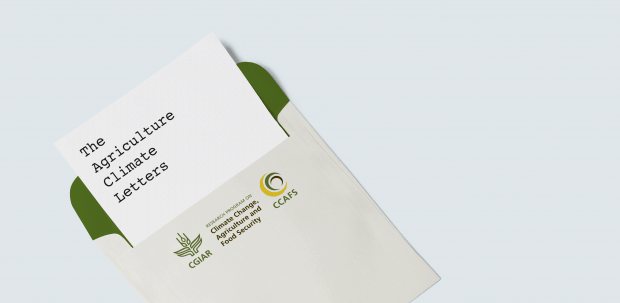
As Nitya Rao and colleagues show, a lot is known about the effects of climate change on women. Most research focuses on women’s vulnerability as a result of reliance on natural resources, lower access to resources and information, and gender and social norms that inhibit their ability to take action and participate in making household and community decisions. Less focus has been given to women’s role as active agents of change, their knowledge and capacity to respond to climate impacts, and the causes of their vulnerability.
Climate-smart agriculture (CSA) can produce a range of benefits for women, if they are able to take advantage of them, and emerging research shows CSA can be a supporting condition for gender equality. In India, analysis on impacts of CSA on two villages and use of mobile phones to provide climate-informed advisories found that both women and men experienced empowerment effects in terms of decision making, and use and control of income.
However, gaps and constraints remain. Differences in priorities and ability to adopt new practices for women and men of different ages, abilities and social classes need to be taken into account. Different groups will have different needs and priorities for training, technology and climate information. CSA as an approach in itself will not necessarily be useful for women. Andrea Collins goes as far as suggesting that CSA could undermine a feminist agenda. It may entrench and solidify power if questions are not asked about who is controlling the technology and who benefits. The tendency to allocate new labor-intensive activities to women may increase their labor loads and can mean they will be hesitant to adopt new adaptive practices. A major challenge, therefore, is to identify the context-specific technologies and supporting actions that are needed; along with the trade-offs and co-benefits that different combinations of options will produce.
Emerging research is starting to answer some of these questions. Chanana and Aggarwal suggest the use of a strategy based on “gender climate hotspot” mapping, which explores the participation of women in agriculture, the degree of climate risk, and poverty levels to identify high-risk areas where climatic risks overlap with a high proportion of women in agriculture. Another approach is to assess the gender-responsiveness of CSA technologies in terms of their effects on women’s labor burden—in other words, to what degree does CSA reduce women’s labor while improving agricultural productivity and income?
Indicators of access to and control of agricultural resources, participation in decision making around family income and farming, and control over proceeds of agricultural production, among others, are being developed to assist policymakers and implementers to understand the gender equality and empowerment effects of CSA, and where there are gaps. Only through detailed analysis of gender implications are we likely to “weather the storm” as well as storm the norms.
This letter draws on the introduction to the special issue of Climatic Change on “Gender Equality in Climate Smart Agriculture: Framework, Approaches and Technologies,” Vol 158, Issue 1, January 2020.
References
- Chanana-Nag N, Aggarwal PK. 2018. Woman in agriculture, and climate risks: hotspots for development. Climatic Change 158: 13–27.
- Collins A. 2018. Saying all the right things? Gendered discourse in climate-smart agriculture. The Journal of Peasant Studies 45(1): 175–191.
- Gutierrez-Montes I, Arguedas M, Ramirez-Aguero F, Mercado L, Sellare J. 2020. Contributing to the construction of a framework for improved gender integration into climate-smart agriculture projects monitoring and evaluation: MAP-Norway experience. Climatic Change 158(1), 93–106.
- Haapala A. 2019. A feminist analysis of oppressive and emancipatory potentialities within technology-prioritized climate change adaptation intervention: a case study from Phailom community in Laos. In Paris T, Rola-Rubzen MF, eds. Gender dimensions of climate change research in agriculture (Case studies in Southeast Asia), Wageningen, the Netherlands: CGIAR Research Program on Climate Change, Agriculture and Food Security (CCAFS). p. 123–140.
- Hariharan VK, Mittal S, Rai M, Agarwal T, Kalvaniya KC, Stirling CM, Jat ML. 2020. Does climate-smart village approach influence gender equality in farming households? A case of two contrasting ecologies in India. Climatic Change, 158(1): 77–90.
- Jost C, Kyazze F, Naab J, Neelormi S, Kinyangi J, Zougmore R, Aggarwal P, Bhatta G, Chaudhury M, Tapio-Bistrom M, Nelson S, Kristjanson P. 2016. Understanding gender dimensions of agriculture and climate change in smallholder farming communities. Climate and Development 8(2): 1–12.
- Khatri-Chhetri A, Regmi PP, Chanana N, Aggarwal PK. 2020. Potential of climate-smart agriculture in reducing women farmers’ drudgery in high climatic risk areas. Climatic Change 158(1): 29–42.
- Rao N, Lawson ET, Raditloaneng WN, Solomon D, Angula, MN. 2019. Gendered vulnerabilities to climate change: insights from the semi-arid regions of Africa and Asia. Climate and Development 11(1): 14–26. https://doi.org/10.1080/17565529.2017.1372266
